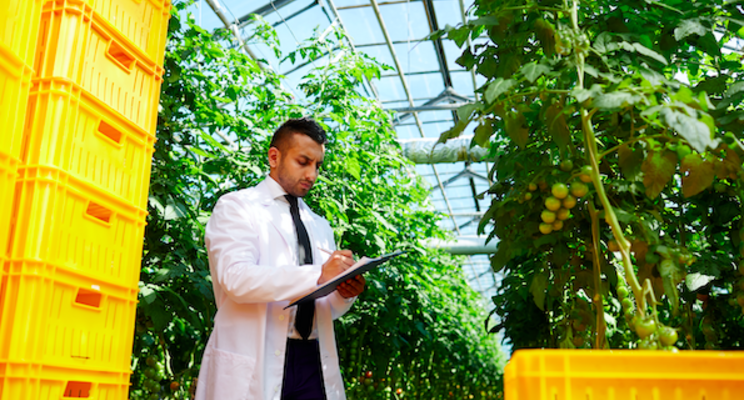Is the future of farming moving indoors?
Added on 01 December 2021

As soon as he could, Alexander traded his family's farmland for the greener pastures of Silicon Valley, where he specialized in robotics for companies like Google, working on the tech giant's drone delivery service.
But after some years in the Bay Area, an unease settled in. He joined tech to solve some of the world's most intractable problems, and yet, a major issue stared him in the face: Agriculture was not working. It was slow, wasteful and inefficient. It was also killing the planet.
"Here I am at Google X, one of the most well-funded companies of our time, and I've seen the advances of robotics and AI and machine learning and all these technologies, and it just felt like we weren't aiming big enough," he said.
Instead of returning to the farm, Alexander brought it indoors. In 2015, he founded Iron Ox, a robotics farming company based in San Carlos that produces food with what he claims is greater efficiency and a lighter environmental footprint. The company combines a hydroponic growing system — a method of growing crops in nutrient-rich water instead of soil — and robots, which autonomously monitor and move plants throughout his greenhouses.
As farmers in the West face historic droughts and raging wildfires made more extreme by a changing climate, several Bay Area start-ups have begun to shift farms indoors, betting that the future of farming will happen in smaller, soil-free and sometimes sunless spaces.
Called "controlled environment agriculture," the term refers to a variety of agricultural practices conducted indoors, whether that be in hoop houses, greenhouses, or full-scale vertical farms, where crops grow in stacked layers under closely monitored conditions.
While some are skeptical that the bulk of agricultural production — namely wheat, corn and soy — can be mass-produced this way, vertical farming and hydroponic systems that grow vegetables and leafy greens have exploded in popularity recently. They are showing up in tech-powered greenhouses, shipping containers and expansive warehouses — even in tiny apartments and backyards.
Proponents say farming this way can maximize yields by growing food year-round with less land-use requirements, greenhouse gas emissions, water and waste.
"I don't think most people realize that food production is one of the leading contributors right now to climate change," said Alexander. "We're just stuck in a process that has inefficiencies every step of the way."
Iron Ox is working to help the system get unstuck. Using robotics and AI to monitor each plant's health, the company avoids waste by cutting down the number of inputs, like the need to spray pesticides indiscriminately. It also shrinks water use by 90% compared to a traditional field by recirculating water throughout the system, Alexander said.
"Our goal is zero waste farming," said Alexander. "That means every liter of water, every gram of nitrogen, every joule of energy needs to create calories, needs to create nutritional value."
Such farms often can be placed very close to urban centers, said Dr. Paul Zankowski, agricultural science advisor at the U.S. Department of Agriculture. "So you can essentially have something grown one day and eaten the next day, or even that same day," he said.
Iron Ox is just one of a growing number of players entering this space. This spring, Gotham Greens, a New York-based hydroponic greenhouse company, announced plans to expand into Northern California, partnering with UC Davis to collaborate on research and innovation of indoor agriculture.
Click here for more information.
Photo created by pressfoto - www.freepik.com
Source: San Francisco Examiner
More news















